Image of 1950 Chevrolet Bel Air, Note: These illustrations use artistic license and may differ from actual historical models.
Performance Metrics
Fundamental Metrics
Emotional Appeal
MMP Rating
| Engine Specifications | |
|---|---|
| Engine: | Inline 6 |
| Displacement: | 216.5 cu in (3.5 L) |
| Horsepower: | 92 hp |
| Torque: | 176 lb-ft |
| Compression Ratio: | 6.6:1 |
| Ignition System: | Battery and coil |
| Cooling System: | Water-cooled |
| Performance Specifications | |
| 0-60 Time: | Estimated 20 seconds |
| 1/4 Mile Time: | Not available |
| Top Speed: | 75 mph |
| Transmission and Drive | |
| Drive Type: | Rear-wheel drive |
| Transmission Type: | 3-speed manual |
| Fuel and Efficiency | |
| Fuel System Type: | Carburetor |
| MPG: | Estimated 15-20 mpg |
| Dimensions and Brakes | |
| Brakes: | Drum brakes |
| Wheelbase: | 115 inches |
| Weight: | 3,200 lbs |
Note: Specifications for classic cars are given to the best of our ability, considering the limited and variant data available.
1950 Chevrolet Bel Air: The Dawn of a New Era in American Motoring
The 1950 Chevrolet Bel Air emerged as a trailblazer, marking the genesis of the hardtop convertible style that would captivate American drivers for decades. Born from the assembly lines of General Motors, this iconic vehicle not only reflected the post-war optimism but also revolutionized automotive design with its unique blend of luxury and accessibility. A notable moment in the Bel Air's history was its debut as Chevrolet's first two-door hardtop, which was a radical departure from the prevalent canvas-roofed convertibles of the era.
Design and Innovation
The 1950 Bel Air boasted an exterior that exuded elegance and modernity. Its sleek lines and absence of a B-pillar when the windows were down offered an unobstructed view that was both refreshing and aesthetically pleasing. Inside, passengers were treated to a cabin that showcased high-quality materials and attention to detail, with plush seats and chrome accents that echoed the vehicle's exterior sophistication. Technologically, it featured innovations like full instrumentation and a choice between a column-shifted three-speed manual or Powerglide automatic transmission – one of the earliest mass-produced automatics.
Color options ranged from understated tones to vibrant hues, with popular choices including Mayland Black, Grecian Gray, and Mist Green. The Bel Air was available in various body styles; however, the two-door hardtop version stood out as the most iconic, offering a unique blend of sportiness and elegance.
Historical Significance
The 1950 Chevrolet Bel Air didn't just turn heads—it turned the tide in automotive design. It set a precedent for hardtop convertibles that other manufacturers would soon follow, blurring the lines between luxury and mainstream vehicles. Its design language would permeate throughout Chevrolet's lineup in subsequent years, cementing its status as a trendsetter.
Performance and Handling
Underneath its stylish exterior, the Bel Air housed a reliable 216.5 cubic-inch "Thrift-King" inline-six engine or an optional 235 cubic-inch "Powerglide" six-cylinder engine. While not built for breakneck speeds, it offered commendable performance with top speeds around 85 mph and acceleration from 0-60 mph in just over 20 seconds. The ride quality was smooth for its time, absorbing bumps with grace while providing drivers with a sense of control during windy road adventures. The sound of its engine was unmistakably characteristic of early post-war American cars—robust yet refined.
Ownership Experience
The Bel Air served various roles from being a reliable daily driver to a cherished show car. Its maintenance was straightforward by modern standards, making it an accessible classic for enthusiasts to keep running smoothly. While some parts may now be rarer than others, the robust enthusiast community provides ample support for those restoring or maintaining their vehicles.
Fun Facts
This classic has seen its share of limelight with rare editions such as the 'Beaumont Beige' models catching collectors' eyes and celebrity ownerships elevating its status further. While not known for setting speed records, it held its own in sales figures and became an emblematic figure in American automotive culture.
Collector's Information
Today, the 1950 Chevrolet Bel Air holds a special place in collectors' hearts. With production numbers estimated in the tens of thousands for this model year alone, it is relatively rare but still accessible for serious collectors. Values can vary widely based on condition and originality but typically range from $20,000 to $50,000 or more for pristine examples. The market has seen appreciation over time for well-maintained or expertly restored models.
Conclusion
The 1950 Chevrolet Bel Air stands as more than just a car; it is an enduring symbol of innovation and style that helped shape America's automotive landscape. With its distinctive design and historical significance, it continues to captivate enthusiasts and collectors alike—a true testament to its lasting legacy.
1950 Chevrolet Bel Air Catalog of Parts
 1950 Chevrolet Bel Air Slip-over Accelerator Pedal Pad Face-AP 30Slip-over Accelerator Pedal Pad Face. Attach to old steel back. 1-7/8" X 8-7/8". Each
1950 Chevrolet Bel Air Slip-over Accelerator Pedal Pad Face-AP 30Slip-over Accelerator Pedal Pad Face. Attach to old steel back. 1-7/8" X 8-7/8". Each 1950 Chevrolet Bel Air Bumper to Body Seal. 1-3/8" wide X 7' long. Each-BG 109-BBumper to Body Seal. 1-3/8" wide X 7' long. Each
1950 Chevrolet Bel Air Bumper to Body Seal. 1-3/8" wide X 7' long. Each-BG 109-BBumper to Body Seal. 1-3/8" wide X 7' long. Each 1950 Chevrolet Bel Air Rear Bumper Arm Insulator Grommets-BG 98Rear Bumper Arm Insulator Grommets. 1-9/16" wide X 2-3/4" long, with 1-11/16" long inner slot. Pair R&L
1950 Chevrolet Bel Air Rear Bumper Arm Insulator Grommets-BG 98Rear Bumper Arm Insulator Grommets. 1-9/16" wide X 2-3/4" long, with 1-11/16" long inner slot. Pair R&L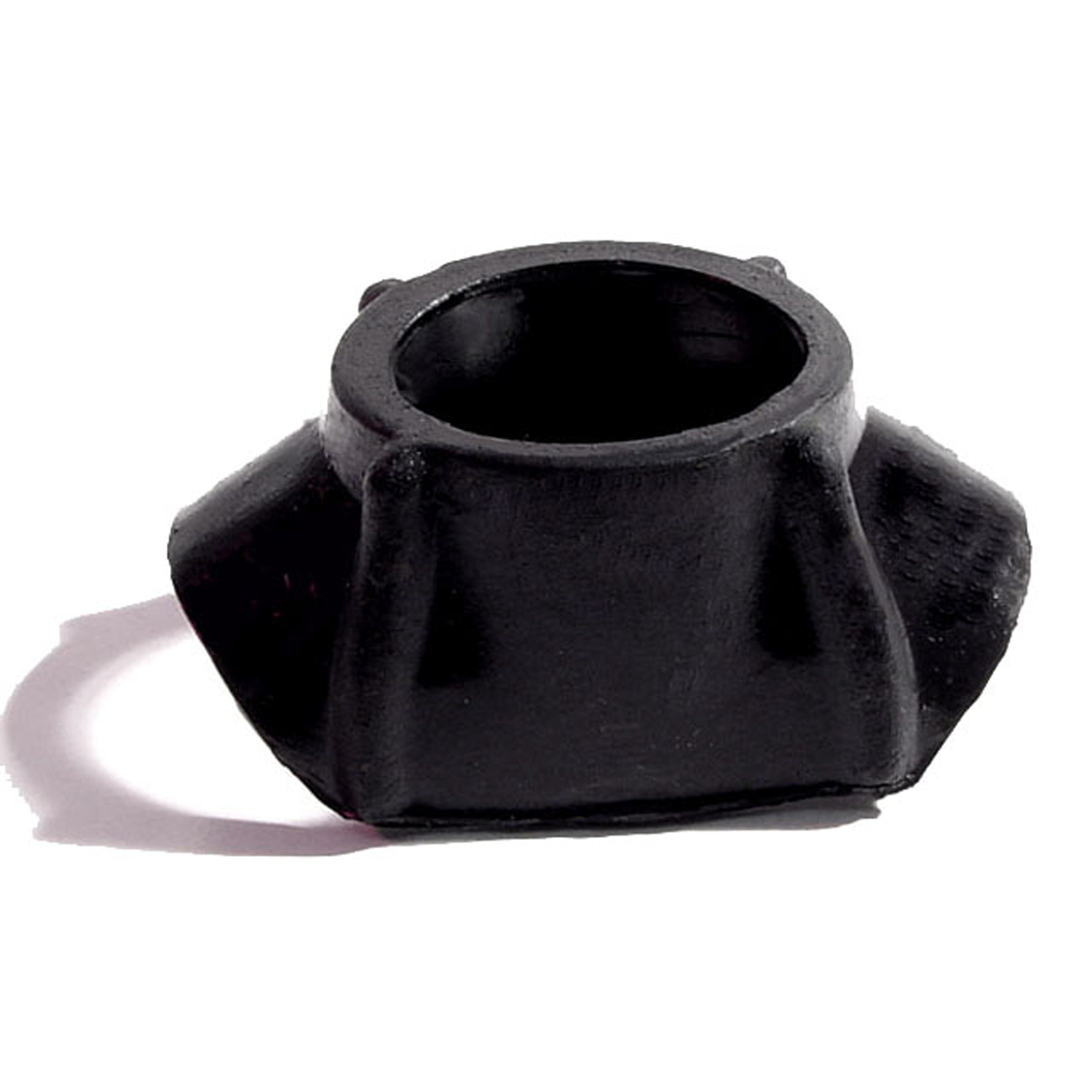 1950 Chevrolet Bel Air Steering Connection Grease Seal-BL 20Steering Connection Grease Seal. Made of grease and oil resistant neoprene. 2 used per car. Each
1950 Chevrolet Bel Air Steering Connection Grease Seal-BL 20Steering Connection Grease Seal. Made of grease and oil resistant neoprene. 2 used per car. Each 1950 Chevrolet Bel Air Shock Absorber Grommet. 1" bottom O.D., 3/4" high-BN 1Shock Absorber Grommet. 1" bottom O.D., 3/4" high., with 7/16" I.D. Each
1950 Chevrolet Bel Air Shock Absorber Grommet. 1" bottom O.D., 3/4" high-BN 1Shock Absorber Grommet. 1" bottom O.D., 3/4" high., with 7/16" I.D. Each 1950 Chevrolet Bel Air Front Stabilizer Bushings. Made of the best rubber-BN 105Front Stabilizer Bushings. Made of the best rubber. 1-1/2" high X 1-7/16" long. Pair
1950 Chevrolet Bel Air Front Stabilizer Bushings. Made of the best rubber-BN 105Front Stabilizer Bushings. Made of the best rubber. 1-1/2" high X 1-7/16" long. Pair 1950 Chevrolet Bel Air Shock Absorber Grommet. 1" bottom O.D-BN 11Shock Absorber Grommet. 1" bottom O.D., 3/4" high, with 5/8" I.D. Each
1950 Chevrolet Bel Air Shock Absorber Grommet. 1" bottom O.D-BN 11Shock Absorber Grommet. 1" bottom O.D., 3/4" high, with 5/8" I.D. Each 1950 Chevrolet Bel Air Front coil-spring insulator-BN 110Front coil-spring insulator. Fits '41-'60 Oldsmobile and '50-'83 GM passenger models. 5-3/8 in. OD x 3-3/4 in. ID x 3/4 in. high with 13/16 in. wide bottom flange 1/4" thick, 12 flutes. Each.
1950 Chevrolet Bel Air Front coil-spring insulator-BN 110Front coil-spring insulator. Fits '41-'60 Oldsmobile and '50-'83 GM passenger models. 5-3/8 in. OD x 3-3/4 in. ID x 3/4 in. high with 13/16 in. wide bottom flange 1/4" thick, 12 flutes. Each. 1950 Chevrolet Bel Air Shock Absorber Grommet. 1" bottom O.D., 5/8" high-BN 13Shock Absorber Grommet. 1" bottom O.D., 5/8" high., with 3/8" I.D. Each
1950 Chevrolet Bel Air Shock Absorber Grommet. 1" bottom O.D., 5/8" high-BN 13Shock Absorber Grommet. 1" bottom O.D., 5/8" high., with 3/8" I.D. Each 1950 Chevrolet Bel Air Upper Control Arm Bushing-BN 23Upper Control Arm Bushing. Pivot pin, caster and chamber front end adjustment. Eight used per car. 7/8" O.D., 3/4" I.D., 1/2" high. Each
1950 Chevrolet Bel Air Upper Control Arm Bushing-BN 23Upper Control Arm Bushing. Pivot pin, caster and chamber front end adjustment. Eight used per car. 7/8" O.D., 3/4" I.D., 1/2" high. Each 1950 Chevrolet Bel Air Lower Control Arm Seal Bushing. Four used per car-BN 24Lower Control Arm Seal Bushing. Four used per car. 1-1/4" O.D., 3/4" I.D. Each
1950 Chevrolet Bel Air Lower Control Arm Seal Bushing. Four used per car-BN 24Lower Control Arm Seal Bushing. Four used per car. 1-1/4" O.D., 3/4" I.D. Each 1950 Chevrolet Bel Air Front Stabilizer Link Bushing to Shaft Support-BN 28Front Stabilizer Link Bushing to Shaft Support. Four or six used per car. Use old steel core. 1-1/4" high, with 3/4" I.D. Each
1950 Chevrolet Bel Air Front Stabilizer Link Bushing to Shaft Support-BN 28Front Stabilizer Link Bushing to Shaft Support. Four or six used per car. Use old steel core. 1-1/4" high, with 3/4" I.D. Each 1950 Chevrolet Bel Air Shock Absorber Grommet. 1-15/16" bottom O.D-BN 5Shock Absorber Grommet. 1-15/16" bottom O.D., 1" high, with 3/8" I.D. Each
1950 Chevrolet Bel Air Shock Absorber Grommet. 1-15/16" bottom O.D-BN 5Shock Absorber Grommet. 1-15/16" bottom O.D., 1" high, with 3/8" I.D. Each 1950 Chevrolet Bel Air Rear Control Arm Bushing. For axle to body. 7/8" I.D-BN 7-BRear Control Arm Bushing. For axle to body. 7/8" I.D., 1-1/4" shaft O.D., 1-3/4" flange O.D., 1-1/2" long. Each
1950 Chevrolet Bel Air Rear Control Arm Bushing. For axle to body. 7/8" I.D-BN 7-BRear Control Arm Bushing. For axle to body. 7/8" I.D., 1-1/4" shaft O.D., 1-3/4" flange O.D., 1-1/2" long. Each 1950 Chevrolet Bel Air Front Stabilizer End Repair Kit-BNK 23Front Stabilizer End Repair Kit. 22-piece set for two stabilizer bars. Contains all rubber bushings, washers, bolts and nuts, enough for one front end. Set
1950 Chevrolet Bel Air Front Stabilizer End Repair Kit-BNK 23Front Stabilizer End Repair Kit. 22-piece set for two stabilizer bars. Contains all rubber bushings, washers, bolts and nuts, enough for one front end. Set 1950 Chevrolet Bel Air Clutch and Brake Pedal Pads. Good Reproduction-CB 102Clutch and Brake Pedal Pads. Good Reproduction. 3-3/4" wide X 2-5/8" long. Pair
1950 Chevrolet Bel Air Clutch and Brake Pedal Pads. Good Reproduction-CB 102Clutch and Brake Pedal Pads. Good Reproduction. 3-3/4" wide X 2-5/8" long. Pair 1950 Chevrolet Bel Air Door and Trunk Bumper. 1/2" O.D. X 1/2" high. Each-DB 35Door and Trunk Bumper. 1/2" O.D. X 1/2" high. Each
1950 Chevrolet Bel Air Door and Trunk Bumper. 1/2" O.D. X 1/2" high. Each-DB 35Door and Trunk Bumper. 1/2" O.D. X 1/2" high. Each 1950 Chevrolet Bel Air Upper Door Hinge Post Bumper. Held by screw-DB 60-AUpper Door Hinge Post Bumper. Held by screw. 7/8" diameter X 1/8" thick. Each
1950 Chevrolet Bel Air Upper Door Hinge Post Bumper. Held by screw-DB 60-AUpper Door Hinge Post Bumper. Held by screw. 7/8" diameter X 1/8" thick. Each 1950 Chevrolet Bel Air Center Division Bar Seal and Retainer-DP 16Center Division Bar Seal and Retainer. Made to original specifications to accommodate chrome molding. 17-1/2" long. Each
1950 Chevrolet Bel Air Center Division Bar Seal and Retainer-DP 16Center Division Bar Seal and Retainer. Made to original specifications to accommodate chrome molding. 17-1/2" long. Each 1950 Chevrolet Bel Air Gravel Shields. Molded flat without metal backing plates-FS 42Gravel Shields. Molded flat without metal backing plates. Apply with contact cement. 19" long X 4-3/4" wide at top. Pair
1950 Chevrolet Bel Air Gravel Shields. Molded flat without metal backing plates-FS 42Gravel Shields. Molded flat without metal backing plates. Apply with contact cement. 19" long X 4-3/4" wide at top. Pair 1950 Chevrolet Bel Air Door, Hood and Trunk Bumper Cap for adjustment bolt-HA 5Door, Hood and Trunk Bumper Cap for adjustment bolt. 7/8" diameter X 7/16" thick. Each
1950 Chevrolet Bel Air Door, Hood and Trunk Bumper Cap for adjustment bolt-HA 5Door, Hood and Trunk Bumper Cap for adjustment bolt. 7/8" diameter X 7/16" thick. Each 1950 Chevrolet Bel Air Door and Hood Bumper. 1" diameter X 7/8" thick. Each-HF 16Door and Hood Bumper. 1" diameter X 7/8" thick. Each
1950 Chevrolet Bel Air Door and Hood Bumper. 1" diameter X 7/8" thick. Each-HF 16Door and Hood Bumper. 1" diameter X 7/8" thick. Each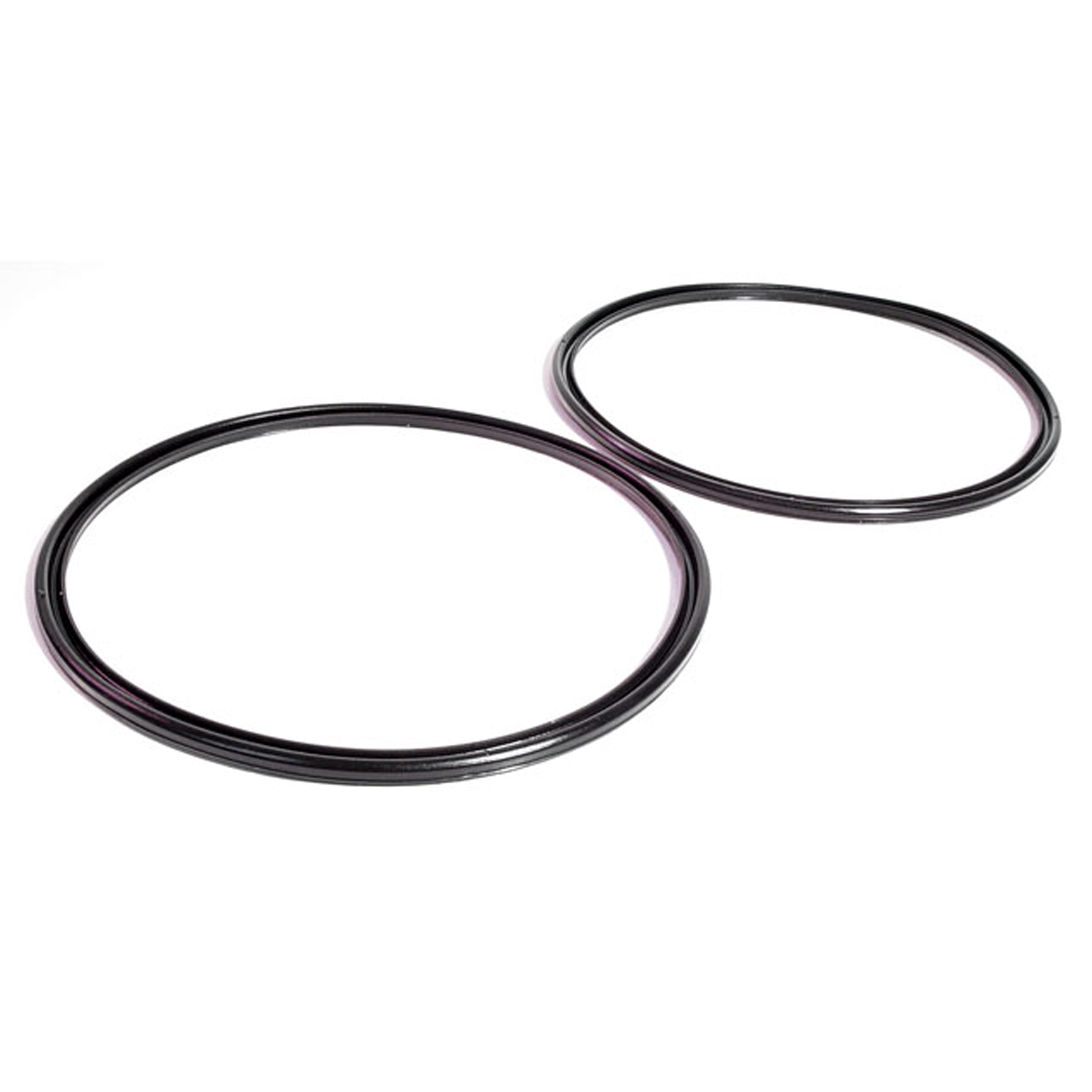 1950 Chevrolet Bel Air Trim Ring Lens Seals. Rubber. 7-3/4" O.D., 7-1/8" I.D-HR 10Trim Ring Lens Seals. Rubber. 7-3/4" O.D., 7-1/8" I.D. Pair
1950 Chevrolet Bel Air Trim Ring Lens Seals. Rubber. 7-3/4" O.D., 7-1/8" I.D-HR 10Trim Ring Lens Seals. Rubber. 7-3/4" O.D., 7-1/8" I.D. Pair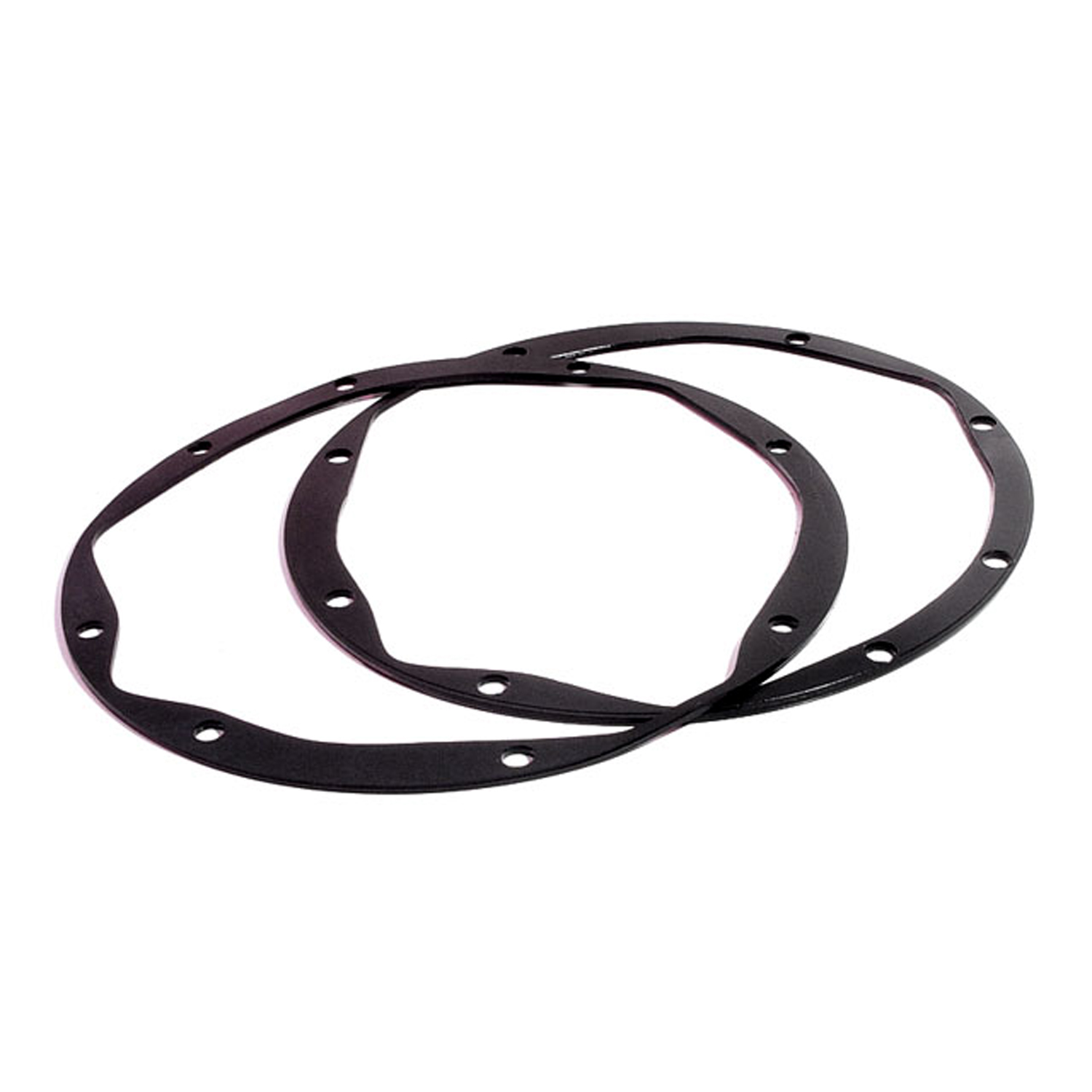 1950 Chevrolet Bel Air Headlight Assembly Housing Pad. 8-3/8" O.D. Pair-HR 7Headlight Assembly Housing Pad. 8-3/8" O.D. Pair
1950 Chevrolet Bel Air Headlight Assembly Housing Pad. 8-3/8" O.D. Pair-HR 7Headlight Assembly Housing Pad. 8-3/8" O.D. Pair 1950 Chevrolet Bel Air Trip Meter Reset Knob. Made of black rubber-KN 10Trip Meter Reset Knob. Made of black rubber. Compare to measurements: 1/8" I.D., 7/16" O.D. X 1/2" tall. Each
1950 Chevrolet Bel Air Trip Meter Reset Knob. Made of black rubber-KN 10Trip Meter Reset Knob. Made of black rubber. Compare to measurements: 1/8" I.D., 7/16" O.D. X 1/2" tall. Each 1950 Chevrolet Bel Air Rear Bumper Gravel Shield Seal. 1-3/8" wide-LP 109-B/FTRear Bumper Gravel Shield Seal. 1-3/8" wide. Sold by the foot
1950 Chevrolet Bel Air Rear Bumper Gravel Shield Seal. 1-3/8" wide-LP 109-B/FTRear Bumper Gravel Shield Seal. 1-3/8" wide. Sold by the foot 1950 Chevrolet Bel Air Fender Skirt Seal. Sold by the foot-LP 111-JFender Skirt Seal. Sold by the foot
1950 Chevrolet Bel Air Fender Skirt Seal. Sold by the foot-LP 111-JFender Skirt Seal. Sold by the foot 1950 Chevrolet Bel Air Door side seal. Same as LP 40-A, but for a heavier seal-LP 40Door side seal. Same as LP 40-A, but for a heavier seal. Fits many domestic passenger cars and trucks. Used in Cobra kit cars as trunk weatherstrip. Per foot.
1950 Chevrolet Bel Air Door side seal. Same as LP 40-A, but for a heavier seal-LP 40Door side seal. Same as LP 40-A, but for a heavier seal. Fits many domestic passenger cars and trucks. Used in Cobra kit cars as trunk weatherstrip. Per foot. 1950 Chevrolet Bel Air Door side seal. Same as LP 40, but for a lighter seal-LP 40-ADoor side seal. Same as LP 40, but for a lighter seal. Fits many domestic passenger cars and trucks. Universal seal for street rods and customs. Used in Cobra kit cars as door weatherstrip. Per foot.
1950 Chevrolet Bel Air Door side seal. Same as LP 40, but for a lighter seal-LP 40-ADoor side seal. Same as LP 40, but for a lighter seal. Fits many domestic passenger cars and trucks. Universal seal for street rods and customs. Used in Cobra kit cars as door weatherstrip. Per foot. 1950 Chevrolet Bel Air Tail-light Pads. 3" wide X 6-3/4" long. Pair-MP 484Tail-light Pads. 3" wide X 6-3/4" long. Pair
1950 Chevrolet Bel Air Tail-light Pads. 3" wide X 6-3/4" long. Pair-MP 484Tail-light Pads. 3" wide X 6-3/4" long. Pair 1950 Chevrolet Bel Air Trunk Handle Pads. 3" long & 1" long. Set R&L-MP 484-BTrunk Handle Pads. 3" long & 1" long. Set R&L
1950 Chevrolet Bel Air Trunk Handle Pads. 3" long & 1" long. Set R&L-MP 484-BTrunk Handle Pads. 3" long & 1" long. Set R&L 1950 Chevrolet Bel Air Hood emblem pad. Single item comprises two pieces. 3-1/8 in-MP 484-CHood emblem pad. Single item comprises two pieces. 3-1/8 in. W x 7-3/4 in. L. Each.
1950 Chevrolet Bel Air Hood emblem pad. Single item comprises two pieces. 3-1/8 in-MP 484-CHood emblem pad. Single item comprises two pieces. 3-1/8 in. W x 7-3/4 in. L. Each. 1950 Chevrolet Bel Air Door Handle Pads. 1-7/8" long and 1-3/8" long. Pair R&L-MP 484-DDoor Handle Pads. 1-7/8" long and 1-3/8" long. Pair R&L
1950 Chevrolet Bel Air Door Handle Pads. 1-7/8" long and 1-3/8" long. Pair R&L-MP 484-DDoor Handle Pads. 1-7/8" long and 1-3/8" long. Pair R&L 1950 Chevrolet Bel Air Antenna Pad. 1-7/8" O.D. Each-MP 484-EAntenna Pad. 1-7/8" O.D. Each
1950 Chevrolet Bel Air Antenna Pad. 1-7/8" O.D. Each-MP 484-EAntenna Pad. 1-7/8" O.D. Each 1950 Chevrolet Bel Air License Light Pad. 2-3/4" wide X 3-1/2" long. Each-MP 533-CLicense Light Pad. 2-3/4" wide X 3-1/2" long. Each
1950 Chevrolet Bel Air License Light Pad. 2-3/4" wide X 3-1/2" long. Each-MP 533-CLicense Light Pad. 2-3/4" wide X 3-1/2" long. Each 1950 Chevrolet Bel Air Park Light Pads. 2-3/8" wide X 16" long. Pair-MP 536-BPark Light Pads. 2-3/8" wide X 16" long. Pair
1950 Chevrolet Bel Air Park Light Pads. 2-3/8" wide X 16" long. Pair-MP 536-BPark Light Pads. 2-3/8" wide X 16" long. Pair 1950 Chevrolet Bel Air Brake Cover Inspection Hole Seal. 3-3/8" O.D. Each-RP 2-ABrake Cover Inspection Hole Seal. 3-3/8" O.D. Each
1950 Chevrolet Bel Air Brake Cover Inspection Hole Seal. 3-3/8" O.D. Each-RP 2-ABrake Cover Inspection Hole Seal. 3-3/8" O.D. Each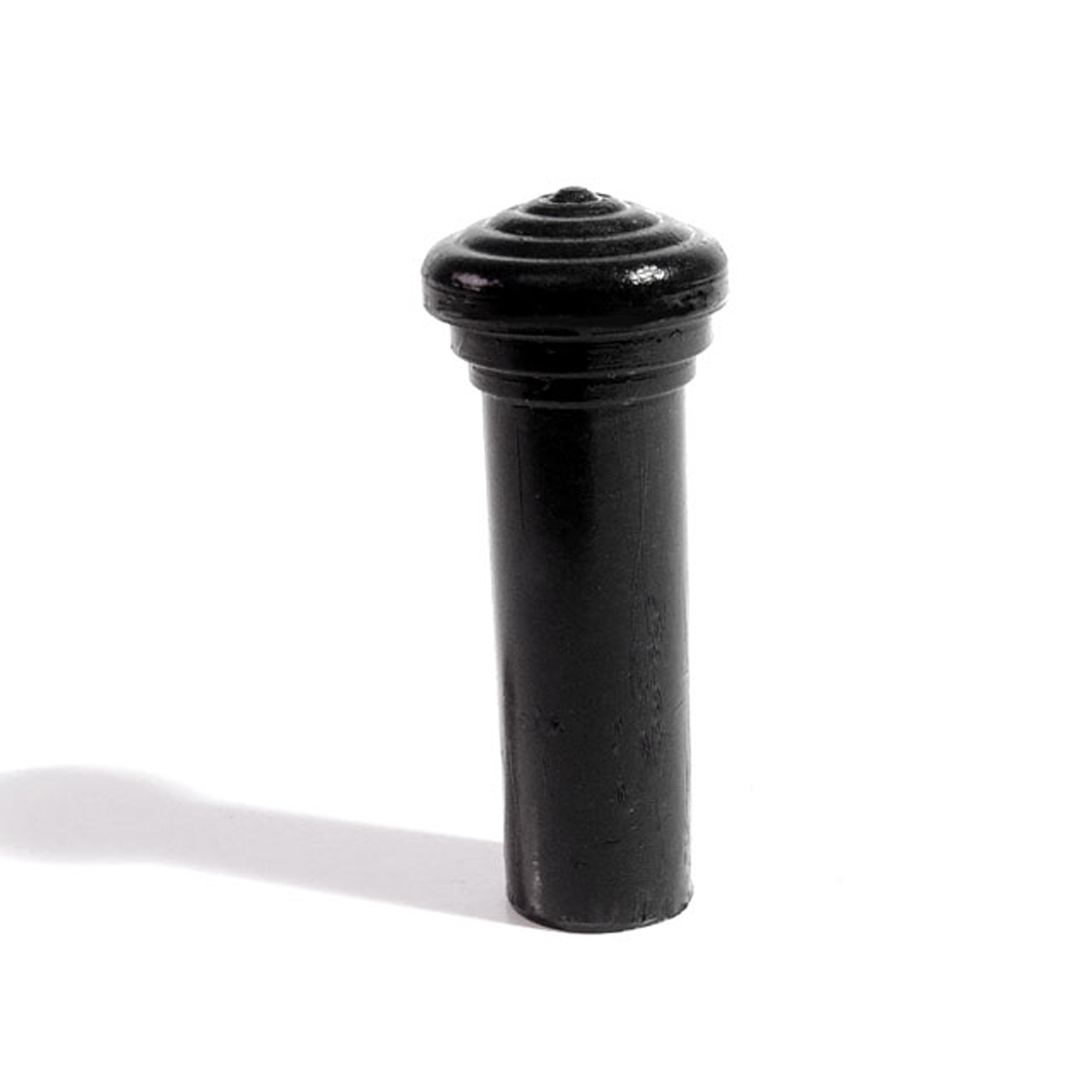 1950 Chevrolet Bel Air Door Lock Knob. Made of Black rubber, self-threading-RP 304-ADoor Lock Knob. Made of Black rubber, self-threading. 1-3/8" tall with 1/8" lower I.D., 3/8" lower O.D. Each
1950 Chevrolet Bel Air Door Lock Knob. Made of Black rubber, self-threading-RP 304-ADoor Lock Knob. Made of Black rubber, self-threading. 1-3/8" tall with 1/8" lower I.D., 3/8" lower O.D. Each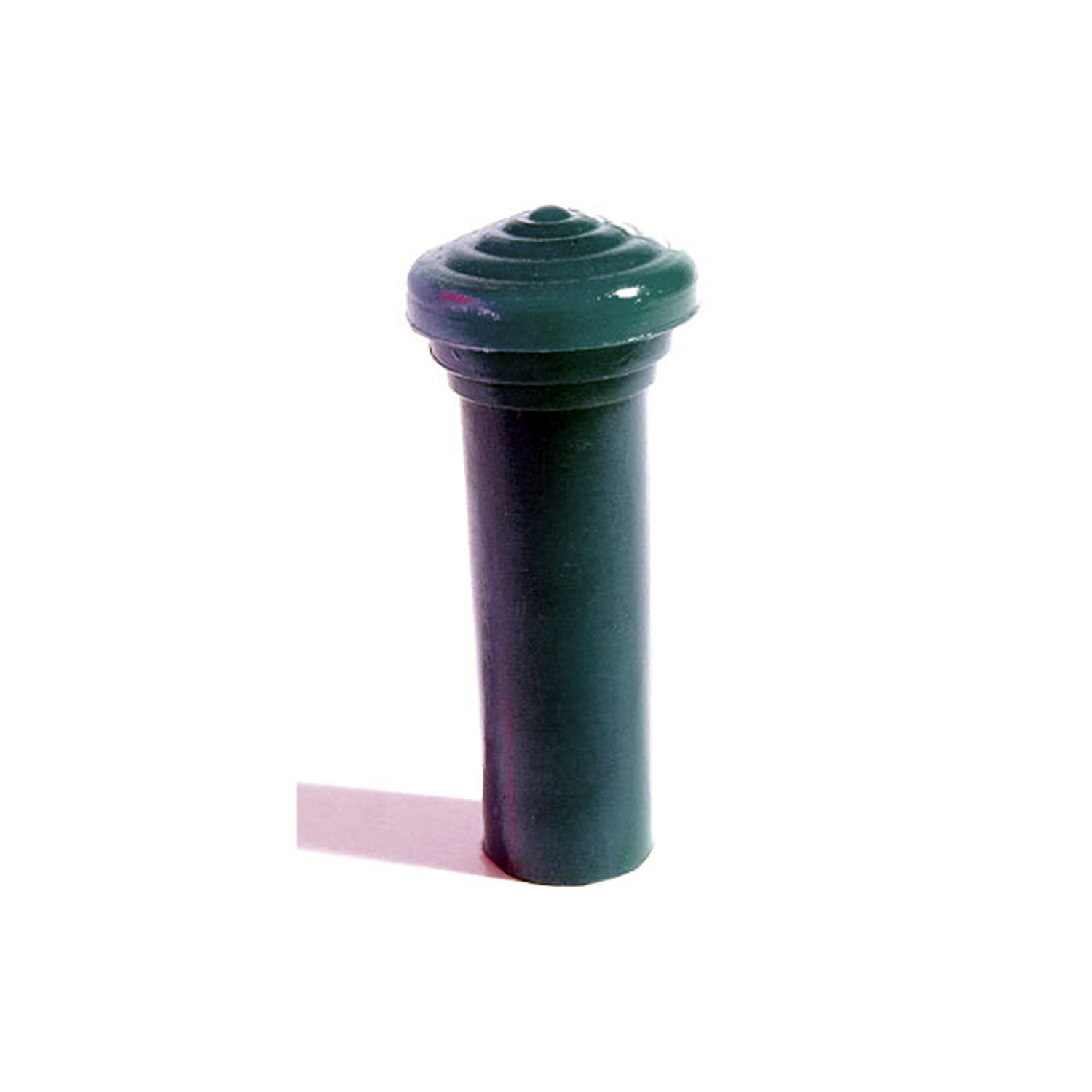 1950 Chevrolet Bel Air Door Lock Knob. Made of Slate Blue rubber, self-threading-RP 304-CDoor Lock Knob. Made of Slate Blue rubber, self-threading. 1-3/8" tall with 1/8" lower I.D., 3/8" lower O.D. Each
1950 Chevrolet Bel Air Door Lock Knob. Made of Slate Blue rubber, self-threading-RP 304-CDoor Lock Knob. Made of Slate Blue rubber, self-threading. 1-3/8" tall with 1/8" lower I.D., 3/8" lower O.D. Each 1950 Chevrolet Bel Air Door Lock Knob. Made of Navy Blue rubber, self-threading-RP 304-DDoor Lock Knob. Made of Navy Blue rubber, self-threading. 1-3/8" tall with 1/8" lower I.D., 3/8" lower O.D. Each
1950 Chevrolet Bel Air Door Lock Knob. Made of Navy Blue rubber, self-threading-RP 304-DDoor Lock Knob. Made of Navy Blue rubber, self-threading. 1-3/8" tall with 1/8" lower I.D., 3/8" lower O.D. Each 1950 Chevrolet Bel Air Door Lock Knob. Made of Silver Blue rubber, self-threading-RP 304-EDoor Lock Knob. Made of Silver Blue rubber, self-threading. 1-3/8" tall with 1/8" lower I.D., 3/8" lower O.D. Each
1950 Chevrolet Bel Air Door Lock Knob. Made of Silver Blue rubber, self-threading-RP 304-EDoor Lock Knob. Made of Silver Blue rubber, self-threading. 1-3/8" tall with 1/8" lower I.D., 3/8" lower O.D. Each 1950 Chevrolet Bel Air Door Lock Knob. Made of Fawn colored rubber, self-threading-RP 304-FDoor Lock Knob. Made of Fawn colored rubber, self-threading. 1-3/8" tall with 1/8" lower I.D., 3/8" lower O.D. Each
1950 Chevrolet Bel Air Door Lock Knob. Made of Fawn colored rubber, self-threading-RP 304-FDoor Lock Knob. Made of Fawn colored rubber, self-threading. 1-3/8" tall with 1/8" lower I.D., 3/8" lower O.D. Each 1950 Chevrolet Bel Air Door Lock Knob. Made of Olive Green rubber, self-threading-RP 304-GDoor Lock Knob. Made of Olive Green rubber, self-threading. 1-3/8" tall with 1/8" lower I.D., 3/8" lower O.D. Each
1950 Chevrolet Bel Air Door Lock Knob. Made of Olive Green rubber, self-threading-RP 304-GDoor Lock Knob. Made of Olive Green rubber, self-threading. 1-3/8" tall with 1/8" lower I.D., 3/8" lower O.D. Each 1950 Chevrolet Bel Air Door Lock Knob. Made of Yellow rubber, self-threading-RP 304-HDoor Lock Knob. Made of Yellow rubber, self-threading. 1-3/8" tall with 1/8" lower I.D., 3/8" lower O.D. Each
1950 Chevrolet Bel Air Door Lock Knob. Made of Yellow rubber, self-threading-RP 304-HDoor Lock Knob. Made of Yellow rubber, self-threading. 1-3/8" tall with 1/8" lower I.D., 3/8" lower O.D. Each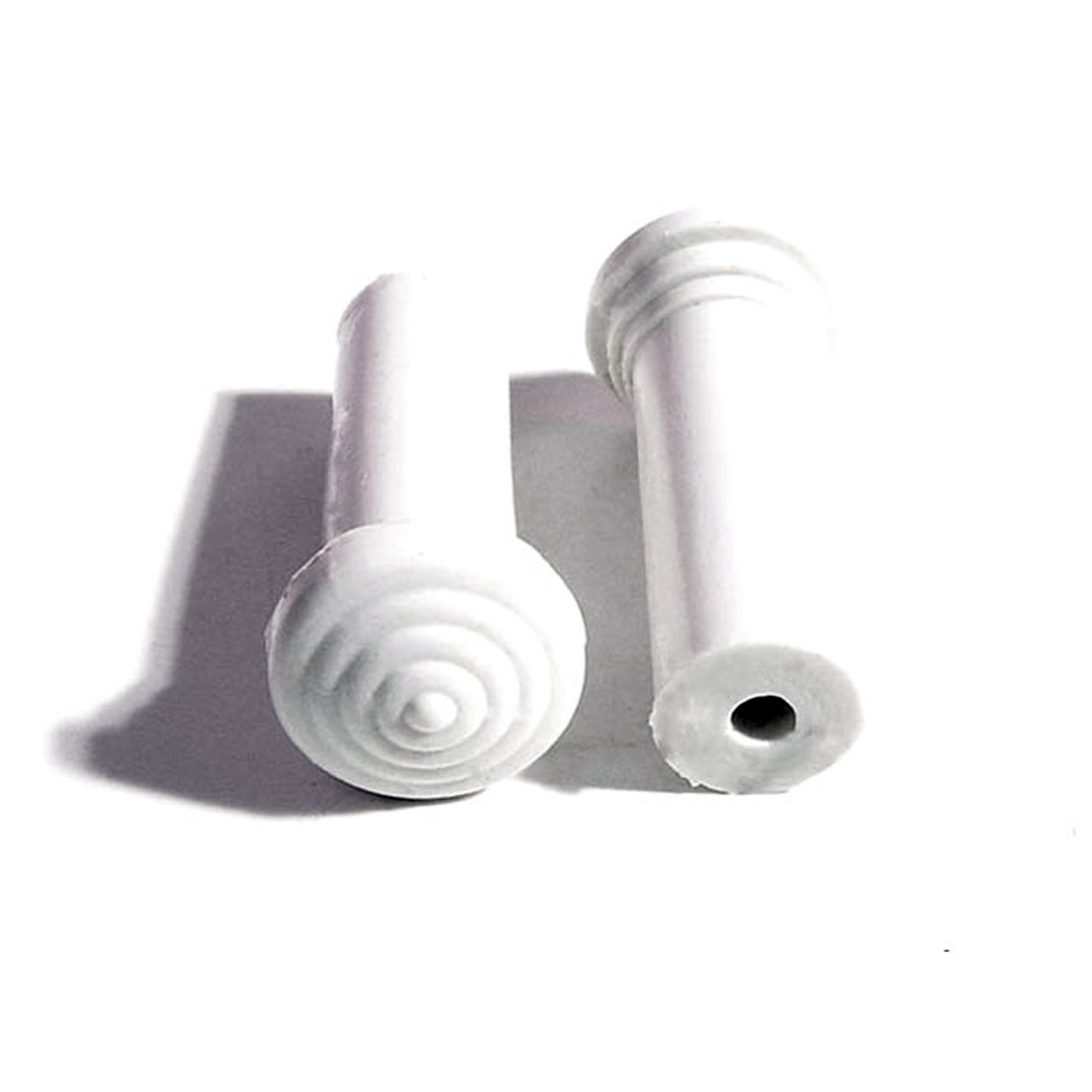 1950 Chevrolet Bel Air Door Lock Knob. Made of White rubber, self-threading-RP 304-IDoor Lock Knob. Made of White rubber, self-threading. 1-3/8" tall with 1/8" lower I.D., 3/8" lower O.D. Each
1950 Chevrolet Bel Air Door Lock Knob. Made of White rubber, self-threading-RP 304-IDoor Lock Knob. Made of White rubber, self-threading. 1-3/8" tall with 1/8" lower I.D., 3/8" lower O.D. Each 1950 Chevrolet Bel Air Door Lock Knob. Made of Silver rubber, self-threading-RP 304-JDoor Lock Knob. Made of Silver rubber, self-threading. 1-3/8" tall with 1/8" lower I.D., 3/8" lower O.D. Each
1950 Chevrolet Bel Air Door Lock Knob. Made of Silver rubber, self-threading-RP 304-JDoor Lock Knob. Made of Silver rubber, self-threading. 1-3/8" tall with 1/8" lower I.D., 3/8" lower O.D. Each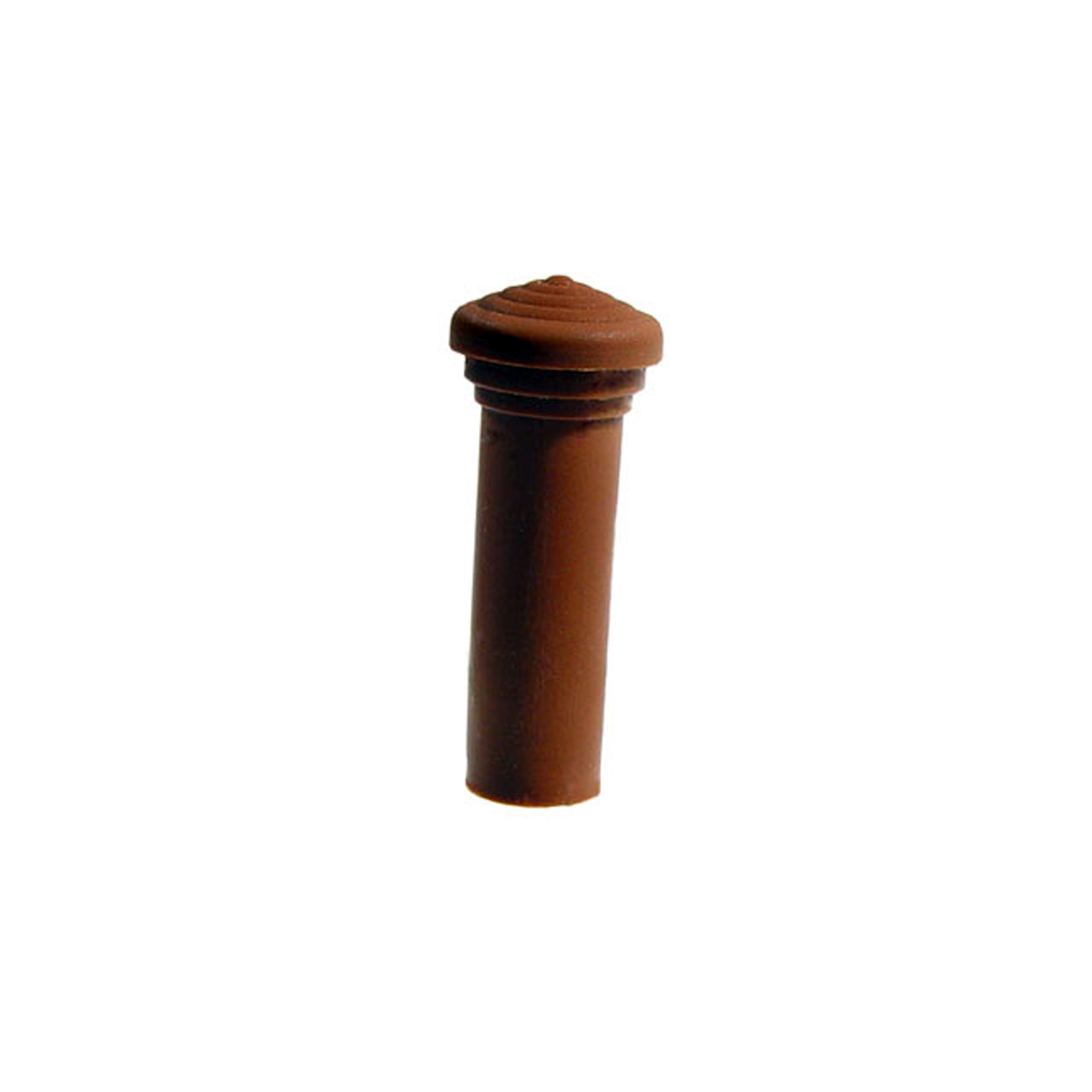 1950 Chevrolet Bel Air Door Lock Knob. Made of Medium Brown rubber, self-threading-RP 304-KDoor Lock Knob. Made of Medium Brown rubber, self-threading. 1-3/8" tall with 1/8" lower I.D., 3/8" lower O.D. Each
1950 Chevrolet Bel Air Door Lock Knob. Made of Medium Brown rubber, self-threading-RP 304-KDoor Lock Knob. Made of Medium Brown rubber, self-threading. 1-3/8" tall with 1/8" lower I.D., 3/8" lower O.D. Each 1950 Chevrolet Bel Air Door Lock Knob. Made of Wedgwood rubber, self-threading-RP 304-LDoor Lock Knob. Made of Wedgwood rubber, self-threading. 1-3/8" tall with 1/8" lower I.D., 3/8" lower O.D. Each
1950 Chevrolet Bel Air Door Lock Knob. Made of Wedgwood rubber, self-threading-RP 304-LDoor Lock Knob. Made of Wedgwood rubber, self-threading. 1-3/8" tall with 1/8" lower I.D., 3/8" lower O.D. Each 1950 Chevrolet Bel Air Door Lock Knob. Made of Teal Green rubber, self-threading-RP 304-MDoor Lock Knob. Made of Teal Green rubber, self-threading. 1-3/8" tall with 1/8" lower I.D., 3/8" lower O.D. Each
1950 Chevrolet Bel Air Door Lock Knob. Made of Teal Green rubber, self-threading-RP 304-MDoor Lock Knob. Made of Teal Green rubber, self-threading. 1-3/8" tall with 1/8" lower I.D., 3/8" lower O.D. Each 1950 Chevrolet Bel Air Door Lock Knob. Made of Moss Green rubber, self-threading-RP 304-NDoor Lock Knob. Made of Moss Green rubber, self-threading. 1-3/8" tall with 1/8" lower I.D., 3/8" lower O.D. Each
1950 Chevrolet Bel Air Door Lock Knob. Made of Moss Green rubber, self-threading-RP 304-NDoor Lock Knob. Made of Moss Green rubber, self-threading. 1-3/8" tall with 1/8" lower I.D., 3/8" lower O.D. Each 1950 Chevrolet Bel Air Door Lock Knob. Made of Ember glow rubber, self-threading-RP 304-ODoor Lock Knob. Made of Ember glow rubber, self-threading. 1-3/8" tall with 1/8" lower I.D., 3/8" lower O.D. Each
1950 Chevrolet Bel Air Door Lock Knob. Made of Ember glow rubber, self-threading-RP 304-ODoor Lock Knob. Made of Ember glow rubber, self-threading. 1-3/8" tall with 1/8" lower I.D., 3/8" lower O.D. Each 1950 Chevrolet Bel Air Clutch Bumpers. Replaces OEM #594989. Pair-RP 31-AClutch Bumpers. Replaces OEM #594989. Pair
1950 Chevrolet Bel Air Clutch Bumpers. Replaces OEM #594989. Pair-RP 31-AClutch Bumpers. Replaces OEM #594989. Pair 1950 Chevrolet Bel Air Anti-Rattle Pad. Used on rear bumper deflector-SB 108Anti-Rattle Pad. Used on rear bumper deflector. Does not fit station wagon or sedan delivery. 2-1/8" Long x 7/8" Wide. Each
1950 Chevrolet Bel Air Anti-Rattle Pad. Used on rear bumper deflector-SB 108Anti-Rattle Pad. Used on rear bumper deflector. Does not fit station wagon or sedan delivery. 2-1/8" Long x 7/8" Wide. Each 1950 Chevrolet Bel Air Fuel Door Bumper. Held by screw. 1/2" X 1/2" X 1/4"-SB 65Fuel Door Bumper. Held by screw. 1/2" X 1/2" X 1/4". Pair
1950 Chevrolet Bel Air Fuel Door Bumper. Held by screw. 1/2" X 1/2" X 1/4"-SB 65Fuel Door Bumper. Held by screw. 1/2" X 1/2" X 1/4". Pair 1950 Chevrolet Bel Air Steering/Shift Column Toe Pan Gasket-SC 23-ASteering/Shift Column Toe Pan Gasket. Die-cut from closed-cell sponge. Made with angled holes. 3-1/2" O.D., 4-7/8" High. Each
1950 Chevrolet Bel Air Steering/Shift Column Toe Pan Gasket-SC 23-ASteering/Shift Column Toe Pan Gasket. Die-cut from closed-cell sponge. Made with angled holes. 3-1/2" O.D., 4-7/8" High. Each 1950 Chevrolet Bel Air Vent Cable Firewall Brace Grommet-SM 105Vent Cable Firewall Brace Grommet. Fits 7/16" hole in sheet metal. 1/4" center hole. Each
1950 Chevrolet Bel Air Vent Cable Firewall Brace Grommet-SM 105Vent Cable Firewall Brace Grommet. Fits 7/16" hole in sheet metal. 1/4" center hole. Each 1950 Chevrolet Bel Air Wire Harness Grommet-SM 106Wire Harness Grommet. Fits through left end (radiator core) support. Fits 15/16" hole in sheet metal. 5/8" center hole. Each
1950 Chevrolet Bel Air Wire Harness Grommet-SM 106Wire Harness Grommet. Fits through left end (radiator core) support. Fits 15/16" hole in sheet metal. 5/8" center hole. Each 1950 Chevrolet Bel Air Speedometer Cable / Utility Grommet-SM 2Speedometer Cable / Utility Grommet. Fits 3/4" to 13/16" hole. 3/16" center hole. Each
1950 Chevrolet Bel Air Speedometer Cable / Utility Grommet-SM 2Speedometer Cable / Utility Grommet. Fits 3/4" to 13/16" hole. 3/16" center hole. Each 1950 Chevrolet Bel Air Wire Harness Grommet. Each-SM 3Wire Harness Grommet. Each
1950 Chevrolet Bel Air Wire Harness Grommet. Each-SM 3Wire Harness Grommet. Each 1950 Chevrolet Bel Air Wire Harness Grommet. Each-SM 36Wire Harness Grommet. Each
1950 Chevrolet Bel Air Wire Harness Grommet. Each-SM 36Wire Harness Grommet. Each 1950 Chevrolet Bel Air Special Purpose Grommet-SM 4Special Purpose Grommet. For firewall, fuel gauge wire, horn wire, hood latch cable and fresh air cable. Fits 1/2" hole. 1/8" center hole. Each
1950 Chevrolet Bel Air Special Purpose Grommet-SM 4Special Purpose Grommet. For firewall, fuel gauge wire, horn wire, hood latch cable and fresh air cable. Fits 1/2" hole. 1/8" center hole. Each 1950 Chevrolet Bel Air Hole Plug and Cowl Bumper. Fits 1/2" hole. Each-SM 52Hole Plug and Cowl Bumper. Fits 1/2" hole. Each
1950 Chevrolet Bel Air Hole Plug and Cowl Bumper. Fits 1/2" hole. Each-SM 52Hole Plug and Cowl Bumper. Fits 1/2" hole. Each 1950 Chevrolet Bel Air Firewall Grommet-SM 53Firewall Grommet. For tachometer, speedometer and emergency brake cable. Fits 7/8" hole. 1-3/16" O.D., 1/4" I.D. Each
1950 Chevrolet Bel Air Firewall Grommet-SM 53Firewall Grommet. For tachometer, speedometer and emergency brake cable. Fits 7/8" hole. 1-3/16" O.D., 1/4" I.D. Each 1950 Chevrolet Bel Air Firewall Grommet-SM 55Firewall Grommet. For throttle rod tube, oil pressure gauge pipe, heat indicator tube and choke rod. 1-3/8" O.D., 7/8" I.D. Each
1950 Chevrolet Bel Air Firewall Grommet-SM 55Firewall Grommet. For throttle rod tube, oil pressure gauge pipe, heat indicator tube and choke rod. 1-3/8" O.D., 7/8" I.D. Each 1950 Chevrolet Bel Air Windshield Wiper Pivot Grommet. 5/16" I.D., 5/8" O.D-SM 6Windshield Wiper Pivot Grommet. 5/16" I.D., 5/8" O.D. Fits 7/16" hole. Each
1950 Chevrolet Bel Air Windshield Wiper Pivot Grommet. 5/16" I.D., 5/8" O.D-SM 6Windshield Wiper Pivot Grommet. 5/16" I.D., 5/8" O.D. Fits 7/16" hole. Each 1950 Chevrolet Bel Air Master Cylinder Rod Dust Boot. Each-SM 65-EMaster Cylinder Rod Dust Boot. Each
1950 Chevrolet Bel Air Master Cylinder Rod Dust Boot. Each-SM 65-EMaster Cylinder Rod Dust Boot. Each 1950 Chevrolet Bel Air Pressure Ring Washer. 1-7/8" O.D., 3/4" I.D., 3/8" thick.-SM 69Pressure Ring Washer for Interior Door Handles & Window Regulators. Fits between escutcheon plates & door panel. Made of sponge rubber. 1-7/8" O.D., 3/4" I.D., 3/8" thick. Each (Corvette: Use for heater hose washer @ firewall)
1950 Chevrolet Bel Air Pressure Ring Washer. 1-7/8" O.D., 3/4" I.D., 3/8" thick.-SM 69Pressure Ring Washer for Interior Door Handles & Window Regulators. Fits between escutcheon plates & door panel. Made of sponge rubber. 1-7/8" O.D., 3/4" I.D., 3/8" thick. Each (Corvette: Use for heater hose washer @ firewall) 1950 Chevrolet Bel Air Firewall and Utility Grommet. Fits 3/4" hole. 3/16" I.D-SM 8Firewall and Utility Grommet. Fits 3/4" hole. 3/16" I.D. Each
1950 Chevrolet Bel Air Firewall and Utility Grommet. Fits 3/4" hole. 3/16" I.D-SM 8Firewall and Utility Grommet. Fits 3/4" hole. 3/16" I.D. Each 1950 Chevrolet Bel Air Starter Wire to Firewall Grommet. Possibly for other wires-SM 99Starter Wire to Firewall Grommet. Possibly for other wires. Fits a 13/16" hole. Each
1950 Chevrolet Bel Air Starter Wire to Firewall Grommet. Possibly for other wires-SM 99Starter Wire to Firewall Grommet. Possibly for other wires. Fits a 13/16" hole. Each 1950 Chevrolet Bel Air Trunk Seal. 16 Feet overall length. Each-TK 50/52-8Trunk Seal. 16 Feet overall length. Each
1950 Chevrolet Bel Air Trunk Seal. 16 Feet overall length. Each-TK 50/52-8Trunk Seal. 16 Feet overall length. Each 1950 Chevrolet Bel Air Trunk Seal. Each-TK 56-18Trunk Seal. Each
1950 Chevrolet Bel Air Trunk Seal. Each-TK 56-18Trunk Seal. Each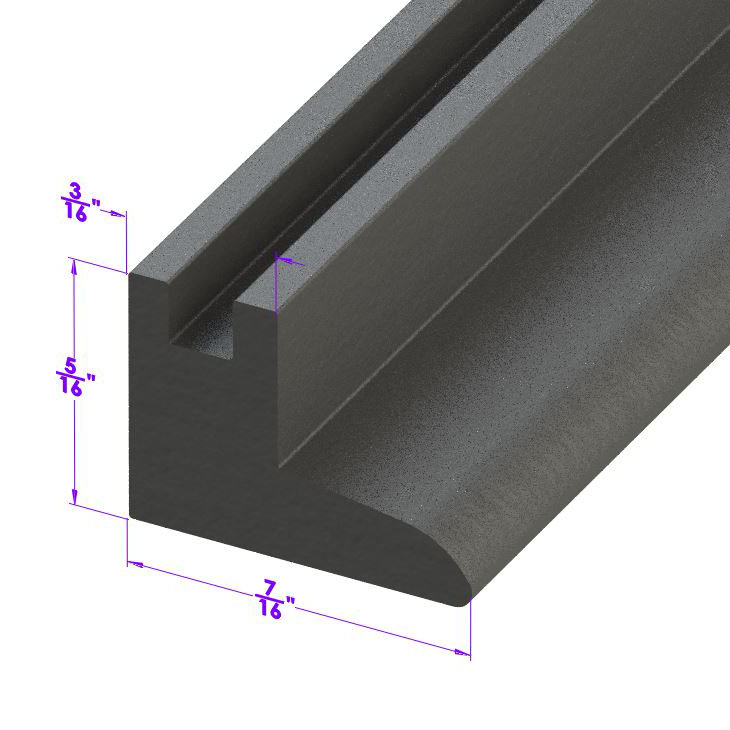 1950 Chevrolet Bel Air Vertical Seal for Vent Window. Each is 17" long. Pair-VS 2Vertical Seal for Vent Window. Each is 17" long. Pair
1950 Chevrolet Bel Air Vertical Seal for Vent Window. Each is 17" long. Pair-VS 2Vertical Seal for Vent Window. Each is 17" long. Pair 1950 Chevrolet Bel Air Flexible glass-run channel-WC 11-72Flexible glass-run channel. Mohair lined, cloth covered with stainless steel bead. Used on side windows. 72 in. long. Each. NOTE: $20 special shipping charge applies for domestic orders. Call or email for overseas shipping costs. Part can be sectioned in two equal lengths to reduce overseas shipping costs.
1950 Chevrolet Bel Air Flexible glass-run channel-WC 11-72Flexible glass-run channel. Mohair lined, cloth covered with stainless steel bead. Used on side windows. 72 in. long. Each. NOTE: $20 special shipping charge applies for domestic orders. Call or email for overseas shipping costs. Part can be sectioned in two equal lengths to reduce overseas shipping costs. 1950 Chevrolet Bel Air Rigid division-bar channel. Made with Zinc-plated bead-WC 1-72Rigid division-bar channel. Made with Zinc-plated bead. Used on lower side windows. 72 in. long. Each. NOTE: $20 special shipping charge applies for domestic orders. Call or email for overseas shipping costs. Part can be sectioned into two equal lengths to reduce overseas shipping costs.
1950 Chevrolet Bel Air Rigid division-bar channel. Made with Zinc-plated bead-WC 1-72Rigid division-bar channel. Made with Zinc-plated bead. Used on lower side windows. 72 in. long. Each. NOTE: $20 special shipping charge applies for domestic orders. Call or email for overseas shipping costs. Part can be sectioned into two equal lengths to reduce overseas shipping costs. 1950 Chevrolet Bel Air Rigid division-bar channel. Made with Zinc-plated bead-WC 1-96Rigid division-bar channel. Made with Zinc-plated bead. Used on lower side windows. 96 in. long. Each. NOTE: $20 special shipping charge applies for domestic orders. Call or email for overseas shipping costs. Part can be sectioned in two or three equal lengths to reduce overseas shipping costs.
1950 Chevrolet Bel Air Rigid division-bar channel. Made with Zinc-plated bead-WC 1-96Rigid division-bar channel. Made with Zinc-plated bead. Used on lower side windows. 96 in. long. Each. NOTE: $20 special shipping charge applies for domestic orders. Call or email for overseas shipping costs. Part can be sectioned in two or three equal lengths to reduce overseas shipping costs. 1950 Chevrolet Bel Air Rigid division-bar channel. Made with stainless steel bead-WC 2-72Rigid division-bar channel. Made with stainless steel bead. 72 in. long. Each. NOTE: $20 special shipping charge applies for domestic orders. Call or email for overseas shipping costs. Part can be sectioned into two equal lengths to reduce overseas shipping costs.
1950 Chevrolet Bel Air Rigid division-bar channel. Made with stainless steel bead-WC 2-72Rigid division-bar channel. Made with stainless steel bead. 72 in. long. Each. NOTE: $20 special shipping charge applies for domestic orders. Call or email for overseas shipping costs. Part can be sectioned into two equal lengths to reduce overseas shipping costs. 1950 Chevrolet Bel Air Flexible sweeper. Made with stainless steel bead-WC 8-72Flexible sweeper. Made with stainless steel bead. Used on inner and outer beltlines. Also forms easily for use with sliding quarter windows. 72 in. long. Each. NOTE: $20 special shipping charge applies for domestic orders. Call or email for overseas shipping costs. Part can be sectioned into two equal lengths to reduce overseas shipping costs.
1950 Chevrolet Bel Air Flexible sweeper. Made with stainless steel bead-WC 8-72Flexible sweeper. Made with stainless steel bead. Used on inner and outer beltlines. Also forms easily for use with sliding quarter windows. 72 in. long. Each. NOTE: $20 special shipping charge applies for domestic orders. Call or email for overseas shipping costs. Part can be sectioned into two equal lengths to reduce overseas shipping costs. 1950 Chevrolet Bel Air Fender Bolts. For use with Fender Bolt Washers; WF 3001-WF 3000Fender Bolts. For use with Fender Bolt Washers; WF 3001. Zinc Chromate plated, high strength. 1" X 5/16". Set of 25
1950 Chevrolet Bel Air Fender Bolts. For use with Fender Bolt Washers; WF 3001-WF 3000Fender Bolts. For use with Fender Bolt Washers; WF 3001. Zinc Chromate plated, high strength. 1" X 5/16". Set of 25 1950 Chevrolet Bel Air Fender Bolt Washers. For use with Fender Bolts; WF 3000-WF 3001Fender Bolt Washers. For use with Fender Bolts; WF 3000. High quality, cadmium plated. 1-1/4" O.D., 3/8" I.D. Set of 25
1950 Chevrolet Bel Air Fender Bolt Washers. For use with Fender Bolts; WF 3000-WF 3001Fender Bolt Washers. For use with Fender Bolts; WF 3000. High quality, cadmium plated. 1-1/4" O.D., 3/8" I.D. Set of 25 1950 Chevrolet Bel Air Front Vent Window Seals For Convertibles. Pair-WR 7301Front Vent Window Seals For Convertibles. Pair
1950 Chevrolet Bel Air Front Vent Window Seals For Convertibles. Pair-WR 7301Front Vent Window Seals For Convertibles. Pair 1950 Chevrolet Bel Air Front Suspension Bumper. 2" high. Each-XB 18Front Suspension Bumper. 2" high. Each
1950 Chevrolet Bel Air Front Suspension Bumper. 2" high. Each-XB 18Front Suspension Bumper. 2" high. Each 1950 Chevrolet Bel Air Rear Spring to Frame Bumper-XB 28Rear Spring to Frame Bumper. 3-7/8" long, 1-7/8" wide, 2-3/8" high. Each
1950 Chevrolet Bel Air Rear Spring to Frame Bumper-XB 28Rear Spring to Frame Bumper. 3-7/8" long, 1-7/8" wide, 2-3/8" high. EachWhy Choose Metro?
For over 100 years, Metro Moulded Parts has been the pinnacle of quality in classic car restoration parts. Our commitment to precision and authenticity in every component ensures a perfect fit and an OEM-level appearance.
- Expert Craftsmanship & Quality: Each part is a testament to our dedication to reliability and perfection, crafted from original designs and thoroughly tested.
- Advanced Technology: We use cutting-edge techniques to create flawless, long-lasting parts that surpass others in performance.
- SuperSoft Sponge – The Ultimate Door Seal: Not only are our door seals 30% softer than competitors', but they're also guaranteed to never leak. They effectively reduce wind and road noise, enhancing your classic car's comfort and driving experience.
- Proudly American: Our parts are a product of American craftsmanship, made in the USA with a spirit of excellence and heritage.
- Unrivaled Warranty: We back our products with a 30-year industry-leading warranty, a testament to our confidence in their quality.
Join us in preserving the legacy of classic cars with parts that are crafted for perfection, not just made.

